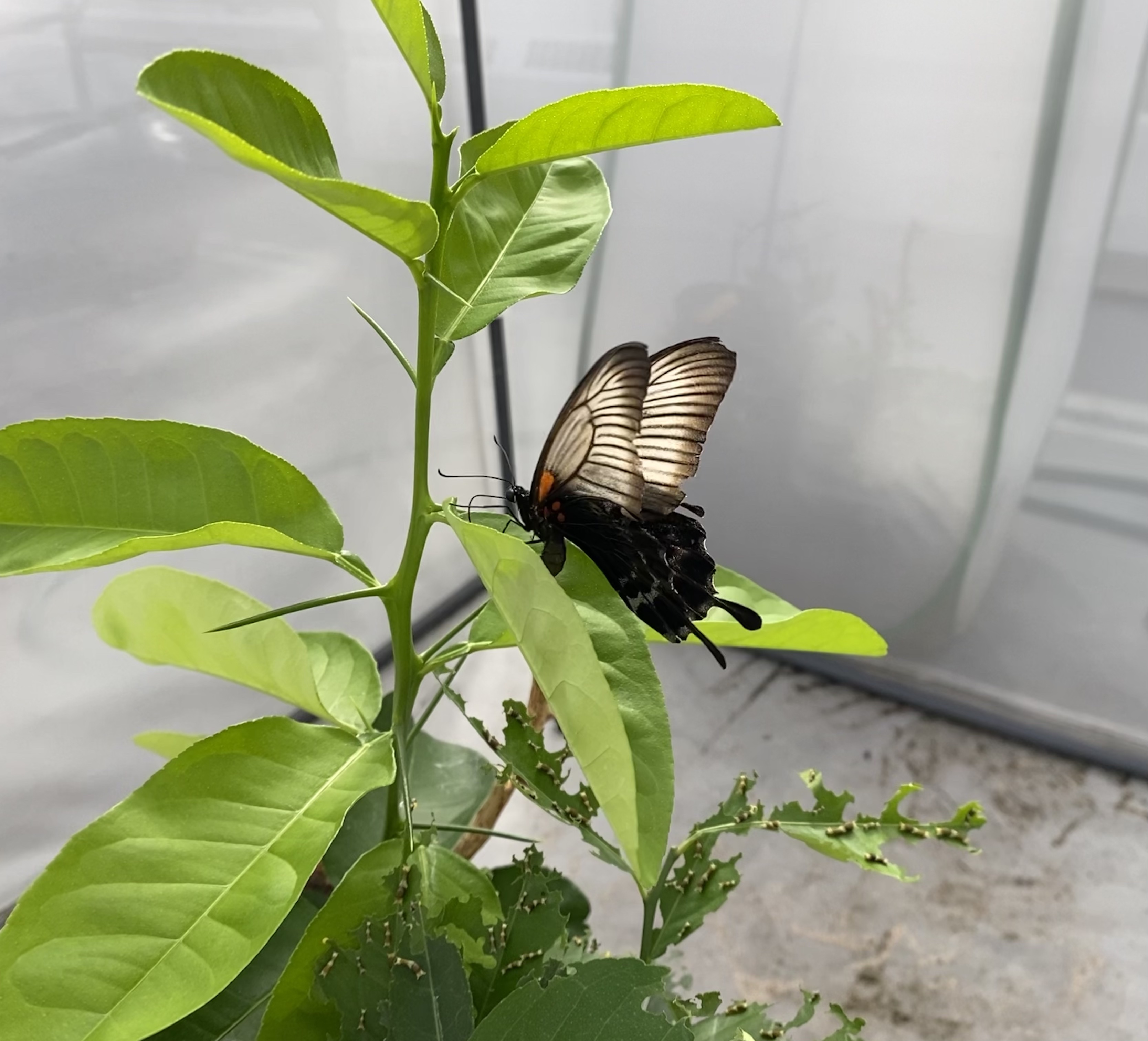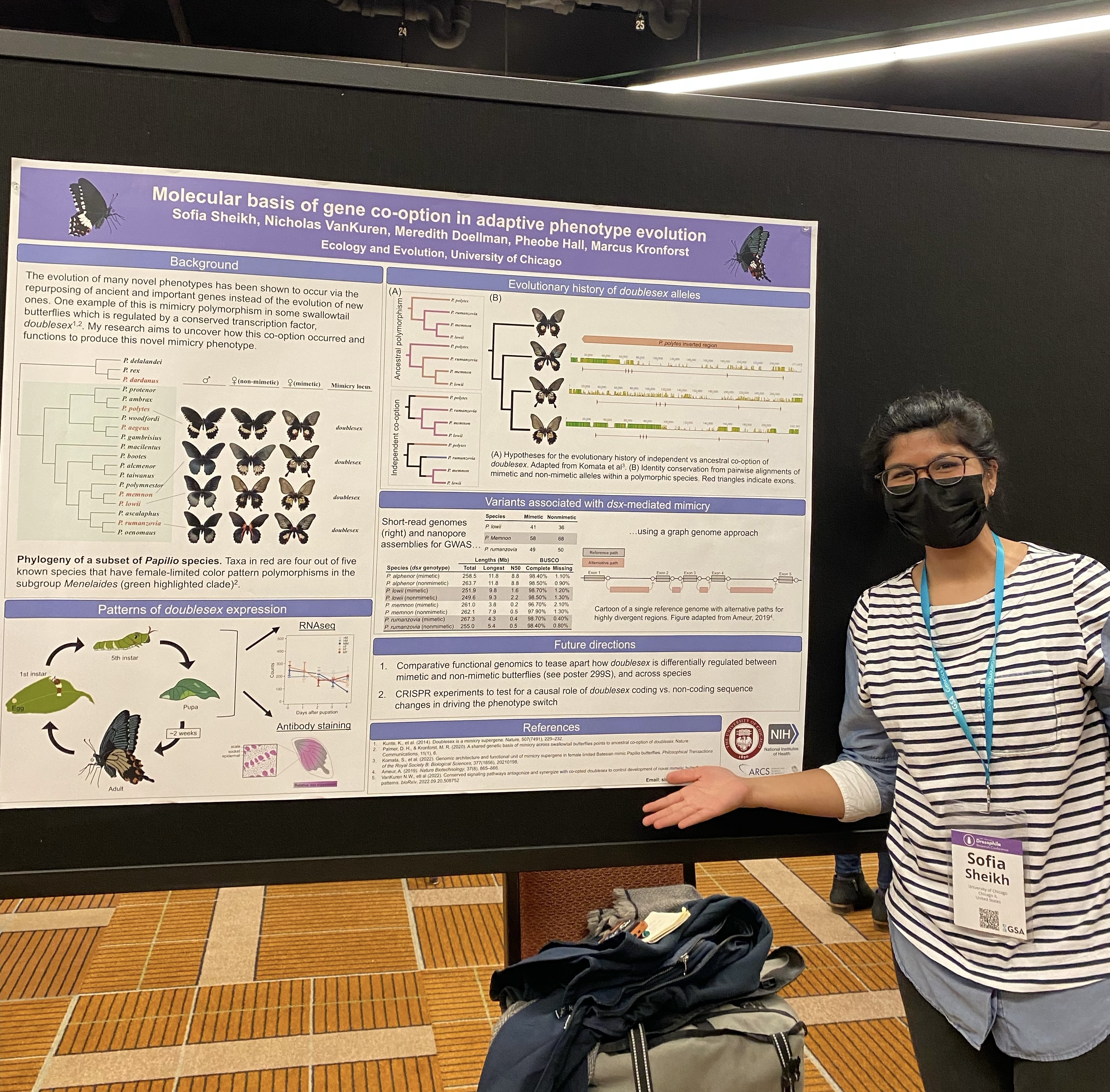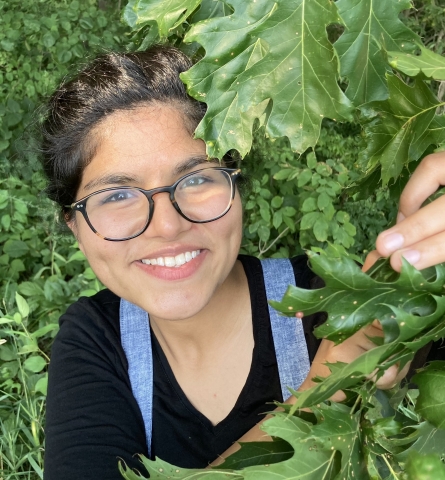Butterflies are more beautiful and unique than we know. Sofia Sheikh, an ARCS Illinois Scholar, knows this firsthand and it’s why she studies them for her PhD in ecology and evolution.
At the University of Chicago, Sheikh performs genetic manipulations on butterflies as she hunts for the reasoning behind gene co-option. Sheikh explains that biodiversity happens over time as traits in a population change from gene mutation or selection. But in the case of her butterflies, they have a unique trait: co-option, which is important for generating diversity. Co-option is when a gene that is typically used for one specific function is recruited for an additional function as well, so one gene will have two purposes.
 “The way co-option works is we have an existing set of genes that have some specific function,” she shares. “But some of those genes get repurposed for different functions, so they get recruited, in a novel context. They keep doing their ancestral function, but now they’re doing something else as well. So instead of evolving new genes, now you have this case where you’re taking existing genetic material and repurposing it for a different function. This co-option process has been documented as being important for the evolution of phenotypic variants.”
“The way co-option works is we have an existing set of genes that have some specific function,” she shares. “But some of those genes get repurposed for different functions, so they get recruited, in a novel context. They keep doing their ancestral function, but now they’re doing something else as well. So instead of evolving new genes, now you have this case where you’re taking existing genetic material and repurposing it for a different function. This co-option process has been documented as being important for the evolution of phenotypic variants.”For her PhD, she’s looking at how some non-toxic butterflies mimic a toxic species’ wing pattern to deter predators from eating them. “This mimicry involves a pretty significant phenotypic switch. You’re switching from what you used to look like into copying some other toxic species. This mimicry is what’s so interesting in the species that I work with.”
Not only is the mimicking unique but it’s also specialized to only female butterflies. But not all female butterflies have this gene, which makes it a female-limited polymorphism. Sheikh says this is based on the allelic variation at one single gene. The gene is double sex. Its ancestral role is to determine sex in insects, but now it’s being used in these butterflies to determine wing patterning too.
Her genetic mutation tests with RNAis have shown results so far. “This process called RNAi is where you go in and you break down the RNAs, so you’re essentially knocking down the expression of a gene,” explains Sheikh. “We peel back the wing and inject the RNAi against double sex, so we’re knocking down the expression of double sex. What’s interesting is the mimetic females start looking like the non-mimetic males.”
 Her PhD is dedicated to finding out how this happens. Her core idea is to understand how genetic co-option works as a mechanism for producing biodiversity. They know what the gene is and why it’s important, but it will be her work that explains how this double-sex gene relates to the process of co-option.
Her PhD is dedicated to finding out how this happens. Her core idea is to understand how genetic co-option works as a mechanism for producing biodiversity. They know what the gene is and why it’s important, but it will be her work that explains how this double-sex gene relates to the process of co-option. Sheikh is grateful to be an ARCS Scholar because she plans to use the funds to attend conferences to further develop her ideas and network with professionals in the field. It will also be used to do additional experiments to generate high-quality genomes. “ARCS gives you the opportunity to expand your research and experiments. It’s an opportunity to go beyond what you’re doing or what you can do,” she concludes, a sentiment many ARCS Scholars share.

